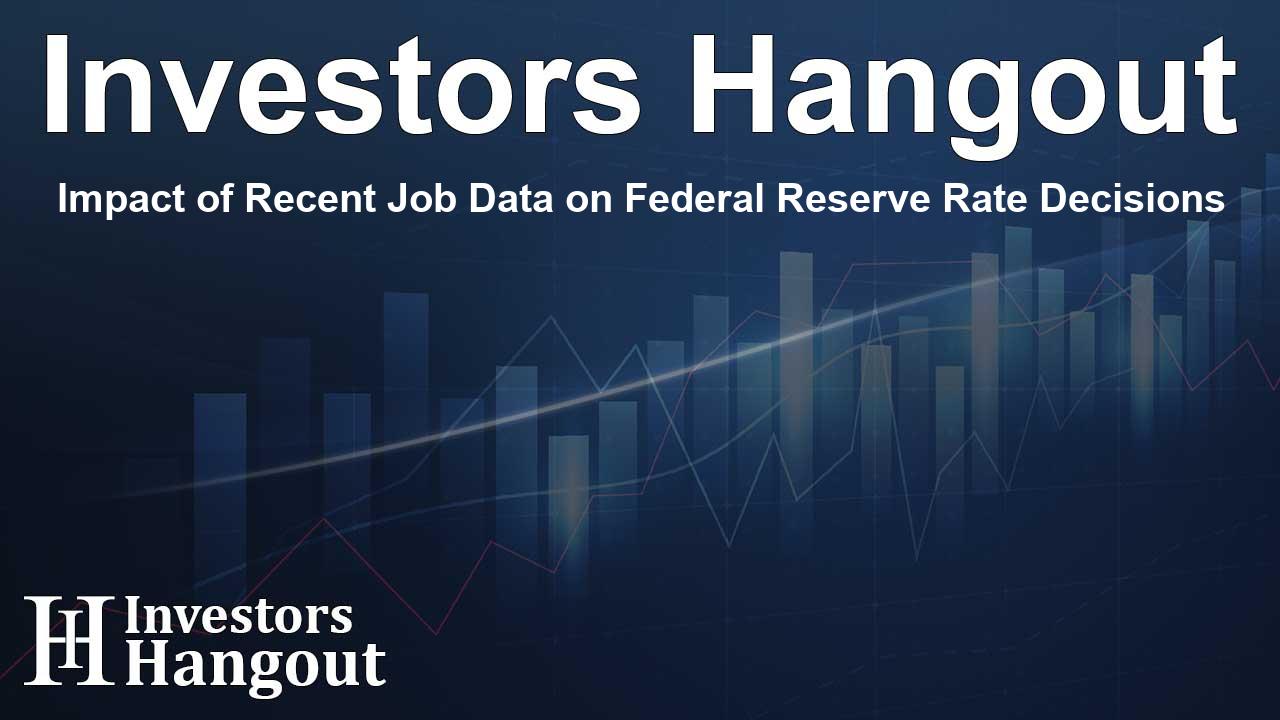Impact of Recent Job Data on Federal Reserve Rate Decisions

Impact of Recent Job Data on Federal Reserve Rate Decisions
Recent employment statistics have created a significant buzz around the Federal Reserve's next steps regarding interest rates. A report revealing that U.S. employers added only 12,000 jobs in October has raised eyebrows and sparked discussions among economists regarding the Fed's anticipated course of action. This increase is notably lower than the expected 113,000, leading many to reassess their outlook.
Understanding the October Employment Report
The non-farm payroll data for October signifies a stark deviation from expectations. The figures suggest that even after accounting for the effects of a Boeing strike and the disruptions caused by severe weather events, the job market appears to be under strain. Despite this, the unemployment rate holds steady at 4.1%. This paradox suggests that while hiring may have slowed, the overall labor market resilience remains intact.
Consequences of Adverse Weather on Employment
Weather-related disruptions have emerged as a significant factor impacting this month’s job report. With over 512,000 individuals reporting their inability to work due to poor weather, we witness the largest recorded figure for an October since tracking began in 1976. This spike highlights how external variables can temporarily disrupt labor markets, often leading to anomalies in employment statistics.
Market Reactions and Rate Predictions
Market analysts and futures traders are taking note of these developments. Traders involved in futures tied to the Fed's policy rate are signaling a 99% probability of a quarter-point cut on November 7. This adjustment reflects heightened confidence concerning the Fed's shift towards a more accommodative monetary policy amidst current economic uncertainties.
Future Policy Rate Projections
The anticipation surrounding Federal Reserve policy is evolving. Recent forecasts show an 83% probability that the policy rate will hover between 4.25% and 4.50% by the end of this year, a noticeable increase from previous estimates. Looking ahead, expectations are now favoring a decrease to 3.50%-3.75% by mid-2025, signifying a more aggressive easing trajectory compared to earlier predictions. Markets are keenly observing how the Fed navigates these turbulent waters.
The Fed's Path Forward
The Federal Reserve's decision-making process is intricately linked to prevailing economic indicators, and the mixed signals arising from job data complicate their strategic outlook. Analysts argue that while the current data may suggest weakness, it’s essential to consider the broader context of recovery post-disasters and the resolution of significant strikes affecting key sectors.
Long-Term Economic Impacts
In light of recent developments, it becomes clear that the actions taken by the Federal Reserve will have far-reaching implications for the economic landscape. Investors and stakeholders are closely monitoring these shifts, anticipating how policy adjustments will influence borrowing costs, consumer spending, and overall economic growth. As we navigate these changes, the interplay between labor market conditions and monetary policy will likely define the near-term financial environment.
Frequently Asked Questions
What was the job addition figure for October?
The U.S. saw an addition of only 12,000 jobs in October, which is below expectations.
How does the unemployment rate relate to job additions?
The unemployment rate remained stable at 4.1%, indicating sustained labor market strength despite lower job additions.
What external factors impacted the job market in October?
Adverse weather conditions and a strike at Boeing contributed to the unusual job figures for the month.
What do traders expect for the Federal Reserve's next move?
Traders are pricing about a 99% chance for a quarter-point interest rate cut on November 7.
How might employment data affect future interest rates?
Weak employment data could lead to more aggressive cuts in the future as the Fed responds to economic conditions.
About The Author
Contact Addison Perry privately here. Or send an email with ATTN: Addison Perry as the subject to contact@investorshangout.com.
About Investors Hangout
Investors Hangout is a leading online stock forum for financial discussion and learning, offering a wide range of free tools and resources. It draws in traders of all levels, who exchange market knowledge, investigate trading tactics, and keep an eye on industry developments in real time. Featuring financial articles, stock message boards, quotes, charts, company profiles, and live news updates. Through cooperative learning and a wealth of informational resources, it helps users from novices creating their first portfolios to experts honing their techniques. Join Investors Hangout today: https://investorshangout.com/
The content of this article is based on factual, publicly available information and does not represent legal, financial, or investment advice. Investors Hangout does not offer financial advice, and the author is not a licensed financial advisor. Consult a qualified advisor before making any financial or investment decisions based on this article. This article should not be considered advice to purchase, sell, or hold any securities or other investments. If any of the material provided here is inaccurate, please contact us for corrections.
